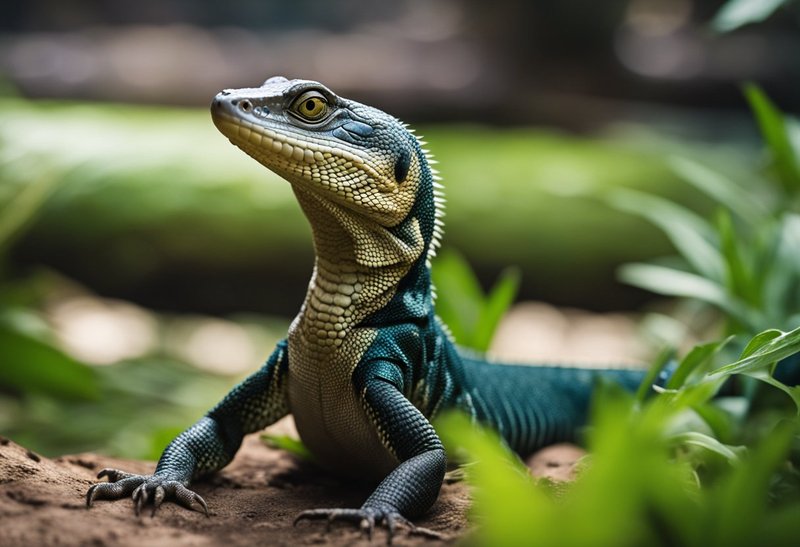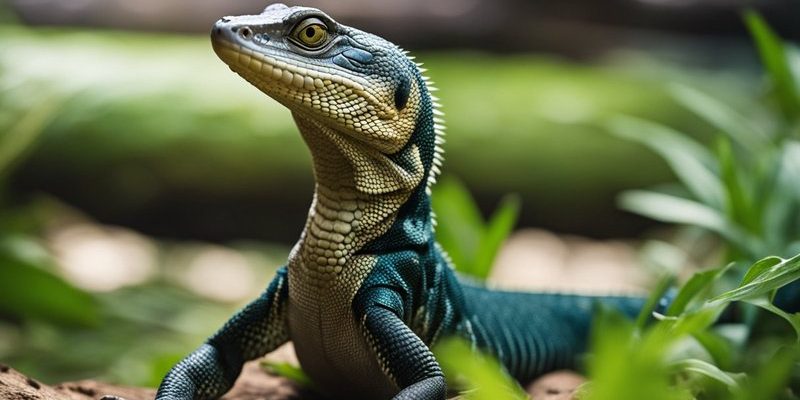
To answer that, we need to look closely at the behavior, diet, and habitats of these reptiles. Think of a monitor lizard as the ultimate survivor in the animal kingdom. They’re clever, fast, and equipped with strong jaws and sharp claws. But do these traits make them a threat to us? Pull up a chair, grab your favorite drink, and let’s dive into the world of monitor lizards together.
Understanding Monitor Lizards: Their Nature and Behavior
Monitor lizards belong to the family Varanidae and are found in various parts of the world, particularly in Africa, Asia, and Australia. They can grow to impressive lengths, with some species, like the Komodo dragon, reaching over ten feet! Here’s the thing: while they may look intimidating, not all monitor lizards are dangerous.
Most species prefer to avoid confrontation. They’re naturally inclined to retreat when faced with larger creatures, including humans. Picture a monitor lizard basking in the sun, keeping a close watch on its surroundings. If it senses danger, it will likely vanish into the underbrush rather than stand its ground. However, like many wild animals, they can become defensive if they feel threatened or cornered.
Monitor lizards primarily hunt smaller animals, insects, and even eggs. They have sharp teeth designed for tearing flesh and a keen sense of smell to track down their prey. Their intelligence also allows them to adapt to various environments, making them effective hunters. You might see them climbing trees or swimming in water, which only adds to their intriguing nature.
When Monitor Lizards Might Be Dangerous
Even though monitor lizards are generally shy, there are situations where they can pose a danger. One key factor is feeling threatened. If a monitor lizard feels cornered or believes its territory is being invaded, it might react aggressively. This aggression can lead to bites, which can be serious due to their powerful jaws.
Another risk comes from the lizard’s bite. Monitor lizards can deliver a painful bite that might cause significant injuries. For instance, the bite of a Komodo dragon can be particularly severe, as it contains bacteria that can lead to infection. So, if someone were to disturb one of these lizards or inadvertently provoke it, they might end up with more than just a scare.
In some cultures, monitor lizards are hunted or kept as pets. In these situations, stress or mistreatment can also lead to aggressive behavior. Imagine a monitor lizard in a small cage, feeling trapped and scared. It’s much more likely to lash out if it feels threatened. This is why it’s crucial for pet owners to understand their needs and provide a suitable environment.
Signs of Aggression in Monitor Lizards
Recognizing signs of aggression can help people stay safe around monitor lizards. If you find yourself in proximity to these reptiles, look out for certain behaviors. For example, an aggressive monitor lizard may hiss, puff up its body, or sway its tail. These actions serve as warning signs to back off.
Another sign of a potentially aggressive lizard is its stance. If a monitor lizard raises its head, flattens its body, and opens its mouth, it’s likely feeling defensive. Similar to how a rattlesnake rattles its tail to warn of danger, these behaviors indicate that the lizard is ready to react if necessary.
If you see a monitor lizard displaying these signs, it’s best to give it space. Respect its environment and allow it to move away. Remember, just like us, they have their personal boundaries.
How to Stay Safe Around Monitor Lizards
If you’re in an area where monitor lizards roam, staying safe is key. Here are some tips to keep in mind:
- Observe from a distance: If you spot a monitor lizard, watch it without getting too close. Use binoculars if you want a better view.
- Avoid feeding them: Feeding monitor lizards can teach them to associate humans with food, which is not great for either party.
- Keep your pets away: Pets might provoke a monitor lizard out of curiosity or fear, which could lead to aggressive encounters.
- Know the terrain: If you’re hiking in areas where these lizards are known to live, be aware of your surroundings to avoid surprises.
By following these simple guidelines, you can appreciate the beauty of monitor lizards without risking an uncomfortable encounter.
Monitor Lizards and Human Interaction: A Cultural Perspective
In some cultures, monitor lizards play a significant role in local folklore and traditions. For example, in parts of Southeast Asia, monitor lizards are often seen as symbols of strength and agility. They are sometimes featured in local art and stories, showcasing the respect that communities have for these creatures.
On the flip side, there are places where monitor lizards are viewed with fear. People may worry about their ability to bite or the potential for disease. A well-meaning but misinformed person might take drastic actions to eliminate these reptiles from their environment, which can lead to a decline in wildlife populations and disrupt ecosystems.
Education is key in addressing these fears. Understanding monitor lizards’ behaviors and habitats can foster coexistence rather than conflict. It’s all about perspective—once we learn more about these creatures, we can appreciate their uniqueness without the anxiety.
So, can the monitor lizard be dangerous to humans? The answer isn’t black and white. While they can pose a risk if threatened or provoked, they generally prefer to keep to themselves. Just like any wild animal, monitor lizards deserve our respect and understanding.
Next time you hear about a monitor lizard, think about their role in the ecosystem and their fascinating behaviors rather than just their potential danger. By learning more about these reptiles, we can appreciate their place in nature and foster coexistence. After all, they’re incredible creatures deserving of our admiration—and maybe a little bit of caution too!

